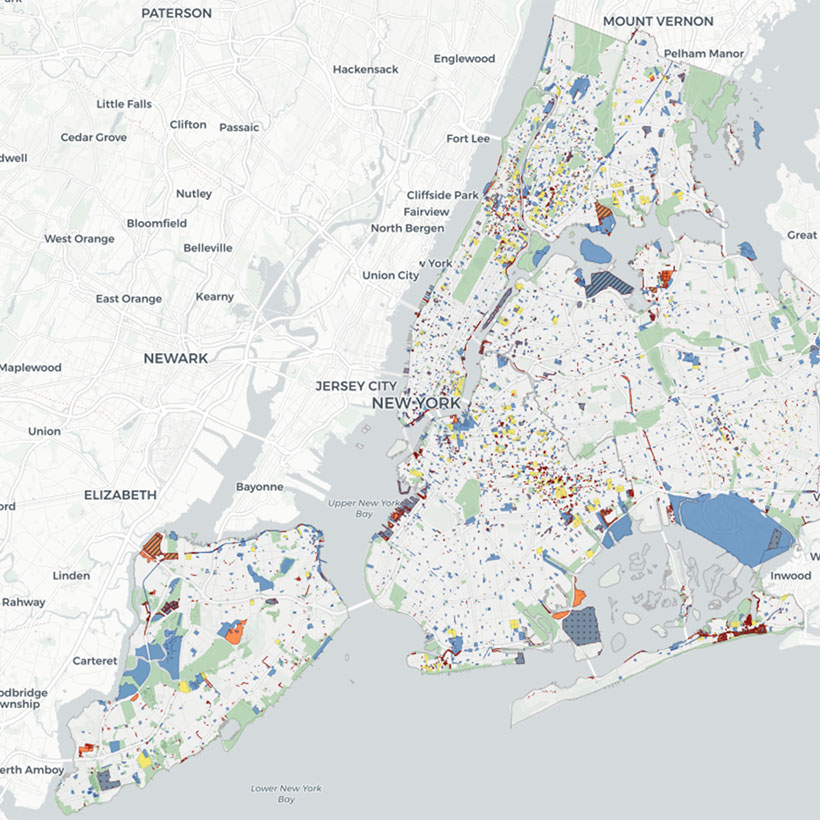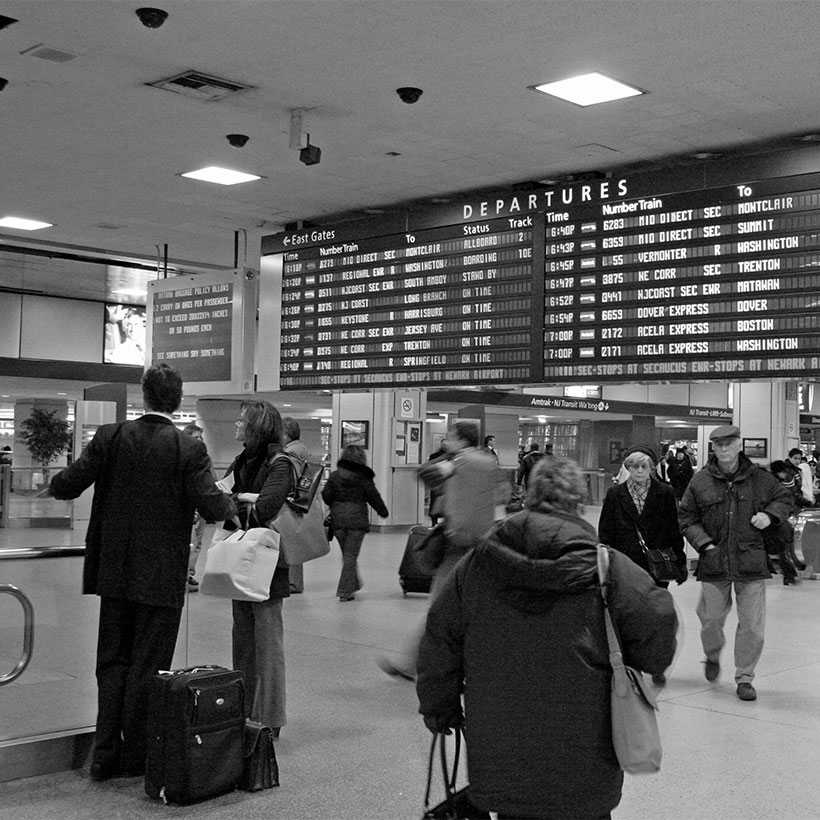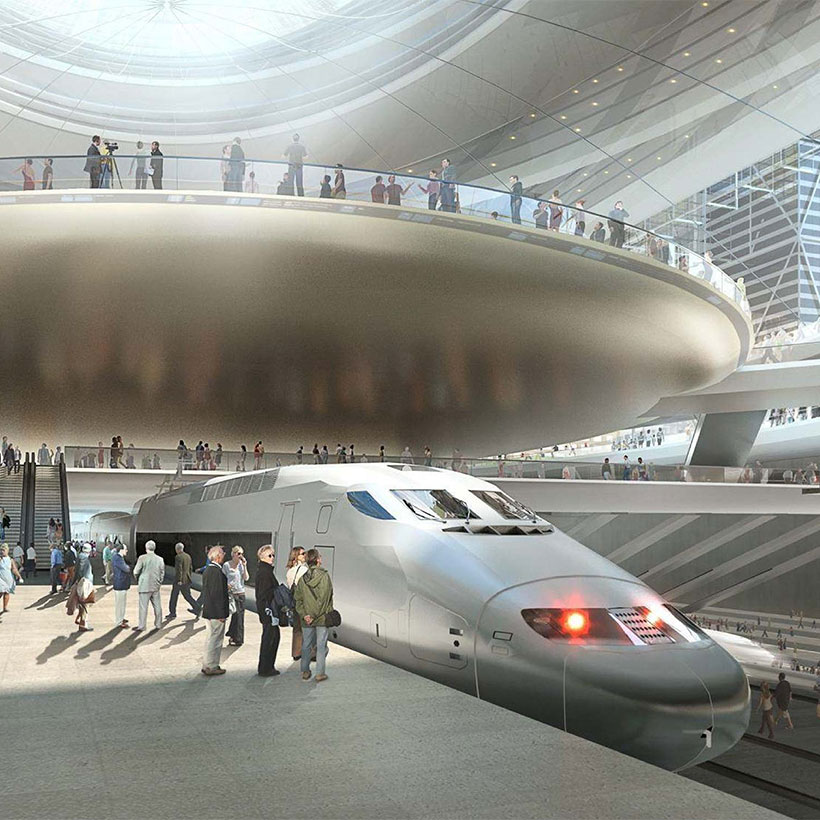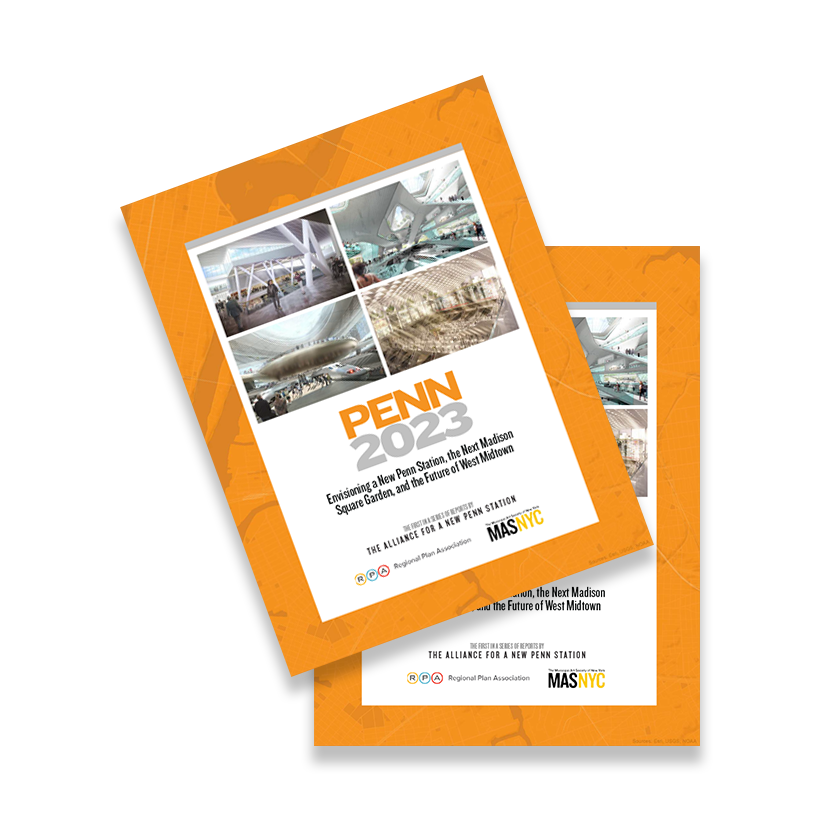Cautious Optimism about Penn Station Area Redevelopment Project
Comments to Empire State Development
For over a generation, elected officials, urban planners, and architects alike have wrestled with the prospect of increasing capacity at Penn Station and improving the surrounding neighborhood. Up to this point, no concrete area plan has come to fruition. The Municipal Art Society, with its long history of advocacy regarding Penn Station, understands all too well the current challenges in affecting a real solution for what is arguably New York City’s and the region’s most significant transit infrastructure issue. With the Penn Station Area Redevelopment Project, Empire State Development seeks to increase track capacity at Penn Station by 40 percent, improve pedestrian access within the station and nearby transit stations, and deliver financial support for the project by creating a mixed-use, transit-oriented neighborhood through the construction of 10 towers totaling over 18 million square feet.
Fundamental questions remain about the project. Is it driven by public benefits? Will it lead to demonstrably improved transit capacity and pedestrian connections? Is the rationale for the magnitude of the development a sound one? Is the project set up to adequately respond to the challenge of coordinating with multiple agencies and levels of government? Does it include forward-thinking, comprehensive solutions to long-term local and regional transit infrastructure issues, and will it result in a thriving neighborhood?
Download Testimony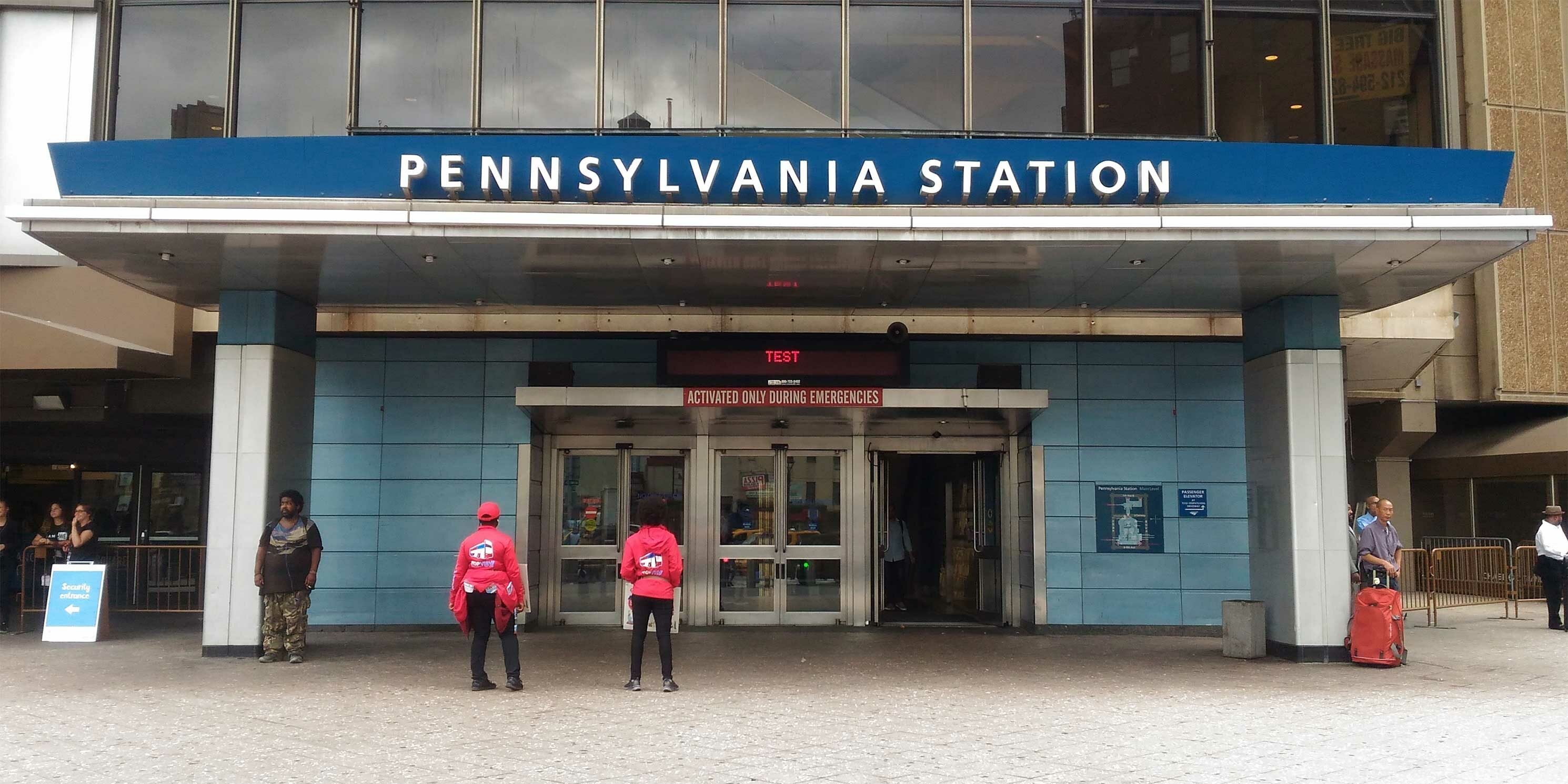
With these questions in mind, MAS believes there is reason for cautious optimism. The opening of Moynihan Train Hall, serving Amtrak riders, shows us that great new civic transit space is possible in New York. The Gateway Program—a series of rail infrastructure projects along the Northeast Corridor which would double the capacity of passenger trains into Penn Station, has found a willing partner with the Biden Administration. Moreover, the Biden Administration’s passing of the Infrastructure Investment and Jobs Act (IIJA), which allocates an estimated $284 billion for transportation network improvements, provides a once in a generation funding opportunity to advance the revisioning of Penn Station and surrounding area.
The long-overdue funding provided under IIJA is certainly welcome news. But the provision of federal dollars for Gateway and the Penn Expansion alone does not ensure that the plan is driven by public benefits that will make Penn Station a singular building and experience that New Yorkers can be proud of, or the area’s public realm effective and appealing, or the surrounding area truly a newly envisioned neighborhood. Achieving these goals is the true challenge ahead for ESD and the rail agencies.
ESD has made certain modifications to the original plan. In response to the recommendations by the project’s Citizen Advisory Committee Working Group, of which MAS President Elizabeth Goldstein is a member, ESD has added more residential units, slightly reduced overall density, and committed to create a public realm task force. These are positive changes. However, the overall project has a long way to go before the project is in the best position to meet the overall goals.
For the project to be successful, ESD cannot be the only stakeholder. It is imperative that the project be guided by a true collaboration amongst the stakeholders, ESD, Amtrak, the MTA, NJ Transit, in constant dialogue with the community and citywide stakeholders, to achieve an integrated comprehensive plan for the station and neighborhood. The collaboration should be formalized as a task force to coordinate the ongoing environmental reviews associated with the project, including the Gateway Program, and add much needed transparency to the process. We urge ESD and the rail agencies to commit to addressing long-range transit solutions such as through-running from NJ to Queens and relocating MSG.
ESD and the railroads also need to present fully realized, rational alternatives that eliminate or reduce the need to demolish area historic resources such as St. John the Baptist Roman Catholic Church and Rectory and the original Pennsylvania Station Service Building on West 31st Street. ESD must also work with the local business community on a transition plan that addresses the almost 500 businesses planned for displacement and the loss of over 9,000 area jobs.
The time is now for ESD to take advantage of the fortuitous funding opportunity. However, it must not let the opportunity pass to come up with a comprehensive plan for Penn Station and the surrounding area that creates great civic space while solving the area’s most vexing local and regional transit infrastructure problems.
MAS will be submitting full comments to ESD by the January 10, 2022, public comment deadline.

